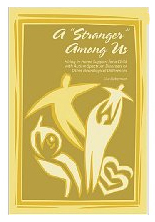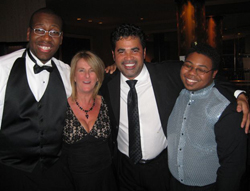Kim Peek, Rain Man, brought autism into our consciousness
by Patricia Wright
Kim Peek died on December 19th. I was lucky enough to meet Mr. Peek once at an autism conference. He shared his story with the hundreds of attendees, and we left that session with incredible respect for how his gifted mind consumed information. We also felt like we had a little brush with fame, given his role in making such a famous movie.
Yes, that’s right – it was Kim Peek who inspired writer Barry Morrow, the author of Rain Man. The 1988 movie won four Academy Awards and helped put the word “autism” into everyday vocabulary.
Fran Peek said his son met Morrow at a convention in the early 1980s and the writer was taken with Peek’s knack for retaining everything he heard. Morrow wrote the script, and the movie went on to win an Oscar for Dustin Hoffman, whose repetitive rants about being an excellent driver and what time People’s Court would start were a hit with moviegoers.
Although the character was technically fictional, Fran Peek said his son was every bit as amazing as Hoffman’s portrayal of him. Kim’s true character showed when he toured the world, helping dispel misconceptions about mental disabilities. Rain Man was the first time many heard the word autism, and although media may not always portray individuals with autism accurately, media attention certainly contributes to awareness. Thanks to Mr. Peek and Mr. Hoffman, autism entered into the vocabulary of many. Mr. Peek was an amazing man, and one whose story brought the world of autism to the consciousness of the general public.








 It’s that time of the year once again, ladies and gentlemen. The people are out doing Christmas shopping, the people are decorating homes on the outside and inside, and many spend time with family and friends. This past Saturday was no exception, as the annual Easter Seals Festival of Trees Holiday Gala took place at Chicago’s Fairmont Hotel.
It’s that time of the year once again, ladies and gentlemen. The people are out doing Christmas shopping, the people are decorating homes on the outside and inside, and many spend time with family and friends. This past Saturday was no exception, as the annual Easter Seals Festival of Trees Holiday Gala took place at Chicago’s Fairmont Hotel.